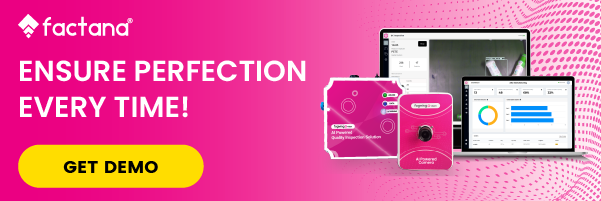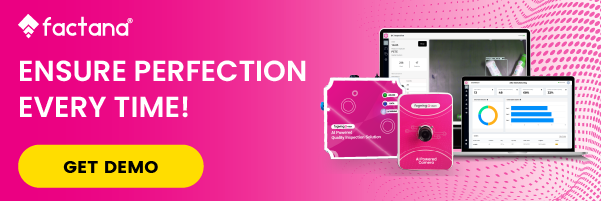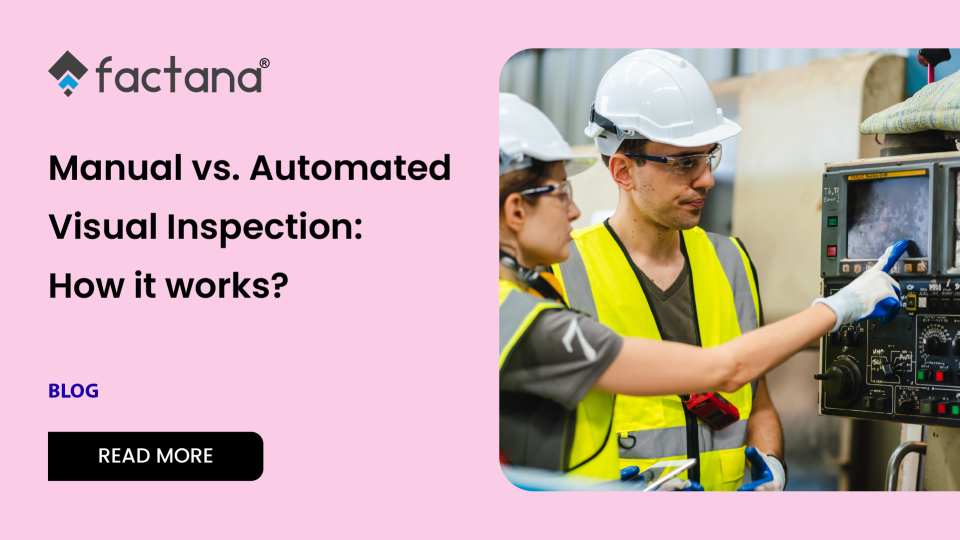Imagine walking down a supermarket aisle and picking up a product, only to notice a scratch on the packaging or a label slightly off-center. These small defects, though seemingly minor, can significantly impact customer perception and brand trust. In manufacturing, ensuring that such defects are caught before products reach consumers is critical — and that’s where visual inspection comes in.
Traditionally, visual inspection has been a human-driven process. Skilled inspectors carefully examine each product, comparing it against quality standards. But in today’s fast-paced, high-volume manufacturing environment, relying solely on humans is often inefficient. This has led many manufacturers to adopt automated visual inspection and, more recently, AI-powered solutions like Fogwing Vision.
Understanding Manual Visual Inspection
Manual visual inspection is the oldest and simplest form of quality control. It relies on human inspectors to detect defects using tools like magnifying glasses, lights, or simple visual checks.
For example, in a boutique chocolate factory, inspectors might check each chocolate for correct shape, glossy finish, or decorative alignment. Subtle color variations or uneven coatings are judged not just by fixed standards, but by what “looks right.” Humans excel at these nuanced evaluations, especially when defects are subjective or aesthetic.
Limitations of manual inspection include:
- Fatigue and errors: Long hours lead to lapses in attention.
- Inconsistency: Different inspectors may have different judgments.
- Scalability challenges: Large-scale production becomes costly and slow.
Manual inspection still has its place, particularly for small batches or highly subjective quality assessments, but it’s increasingly supplemented by automated systems.
The Rise of Automated Visual Inspection
Automated visual inspection uses cameras, sensors, and software to detect defects on production lines. Unlike humans, machines don’t tire, making it possible to maintain consistent inspection at high speed.
For instance, an electronics manufacturer producing thousands of circuit boards per hour can use automated cameras to capture images of each board. The software then checks these images against pre-set quality parameters, flagging misaligned components, micro-cracks, or soldering defects instantly.
Advantages of automated inspection:
- Consistent detection for pre-defined defects.
- High-speed inspection suitable for large-scale production.
- Reduces labor costs over time.
Limitations:
- Rigid rules may miss defects outside the programmed parameters.
- Requires significant initial investment and careful calibration.
- Limited adaptability to new or unexpected defect types.
Introducing AI-Powered Visual Inspection
The real game-changer is AI-powered visual inspection. Unlike traditional automated systems, AI learns from data. By analyzing thousands of images of defective and non-defective products, AI systems can detect patterns and anomalies that might have gone unnoticed before.
Fogwing Vision exemplifies this next-generation approach. It combines advanced image recognition with machine learning to continuously improve defect detection. If a new type of defect emerges in a production batch, the system can learn from it and apply that knowledge in real-time to future inspections.

Benefits include:
- High accuracy: Detects subtle and complex defects beyond human or traditional automated capacity.
- Adaptability: Learns new defect types over time without reprogramming.
- Data-driven insights: Provides analytics to identify trends, improve processes, and maintain quality standards.
AI-powered systems are particularly suited for high-volume production where precision, speed, and continuous improvement are essential.
Comparing Manual, Automated, and AI-Powered Inspection
| Feature / Factor | Manual Inspection | Automated Inspection | AI-Powered Visual Inspection |
| Speed | Slower; limited by human capacity | Fast; suitable for high-volume production | Extremely fast; handles thousands of items per minute |
| Accuracy | Variable; dependent on inspector skill | Consistent for pre-defined defects | Highly accurate; detects subtle and complex defects |
| Flexibility | High; adapts to unusual or aesthetic defects | Medium; needs reprogramming for new defect types | High; AI learns and adapts to new defect types over time |
| Cost (Initial) | Low | High | High (equipment + AI setup) |
| Cost (Long-Term) | High (labour-intensive) | Lower once deployed | Lower over time; minimal human intervention needed |
| Human Judgment Needed | Required | Minimal | Minimal; humans intervene only for subjective decisions |
| Data & Analytics | Manual record-keeping | Automated reporting | Advanced analytics and trend reporting; continuous learning |
| Best Suited For | Small batches, subjective quality checks | Large-scale, precision-focused production | High-volume production with complex defects and continuous improvement |
Challenges in Visual Inspection
Even with advanced systems, manufacturers face several challenges:
- Integration complexity: Combining AI inspection with existing production lines requires planning.
- Data quality: AI accuracy depends on the quantity and quality of training data.
- Maintenance and updates: Both automated and AI systems need regular calibration and software updates.
- Human oversight: Some defects still require subjective judgment, so humans remain part of the loop.
Looking Ahead: The Future of Visual Inspection
Industry 4.0 is driving real-time, data-driven quality control. AI-powered systems like Fogwing Vision enable manufacturers to:
- Detect defects instantly.
- Reduce waste and rework.
- Gain actionable insights for continuous process improvement.
Manual inspection will likely remain for small-scale or highly subjective checks, while AI handles the bulk of high-speed, precision-critical production lines. Over time, AI adoption will make visual inspection more accurate, efficient, and data-rich than ever before.
Conclusion
The evolution of visual inspection from manual to automated to AI-powered demonstrates how technology can improve both quality and efficiency in manufacturing. While manual inspection offers human judgment and flexibility, automated systems bring speed and consistency. AI-powered solutions like Fogwing Vision combine the best of both worlds, delivering speed, accuracy, adaptability, and actionable insights.
For manufacturers aiming to maintain high standards, reduce waste, and scale efficiently, embracing AI-powered visual inspection is no longer just an option; it’s the future.

FAQ’s
1. What are the advantages and disadvantages of manual vs automated visual inspection in manufacturing?
Manual is flexible but slow and inconsistent. Automated is fast and consistent, but less adaptable to new defect types.
2. How does AI-powered visual inspection improve quality control compared to traditional methods?
AI detects subtle defects, adapts to new types, and delivers high-speed, high-accuracy inspection with real-time analytics.
3. Is AI visual inspection worth the cost for small and medium manufacturing businesses?
Yes. It lowers labour costs, reduces defects, and scales with growth, offering long-term savings despite higher setup costs.

